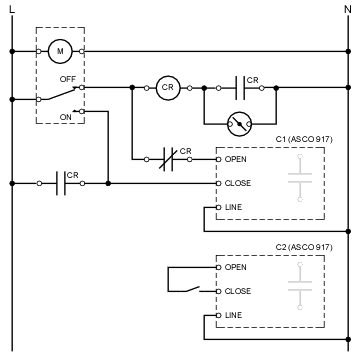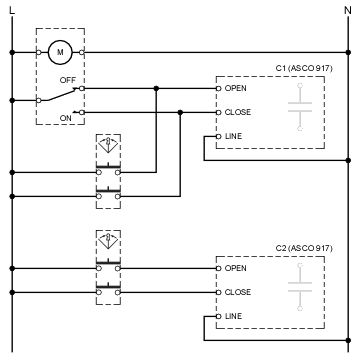I'm pretty confused with a lighting system that i'm working on. I could really use some step by step clarification on the schematic.
I have:
- Two master keyed switches on two separate circuits with separate neutrals (277V)
- one master switch has (5) sub toggle switches controlling m1-m5
- the other master goes directly through the relay controlling lights (e) and (j)
- all of these lights need a Tork TZ-222L time clock and go through an ASCO #917 relay
- the returns from the (5) toggle switches need to go through an additional ASCO #917 relay
Here's a pic of the schematic. Hope someone can help because i'm lost one where to bring my power first and with what to leave from one item to the next.
- do I need both if any neutrals in the time clock and relays?
- where do I start?

I have:
- Two master keyed switches on two separate circuits with separate neutrals (277V)
- one master switch has (5) sub toggle switches controlling m1-m5
- the other master goes directly through the relay controlling lights (e) and (j)
- all of these lights need a Tork TZ-222L time clock and go through an ASCO #917 relay
- the returns from the (5) toggle switches need to go through an additional ASCO #917 relay
Here's a pic of the schematic. Hope someone can help because i'm lost one where to bring my power first and with what to leave from one item to the next.
- do I need both if any neutrals in the time clock and relays?
- where do I start?





